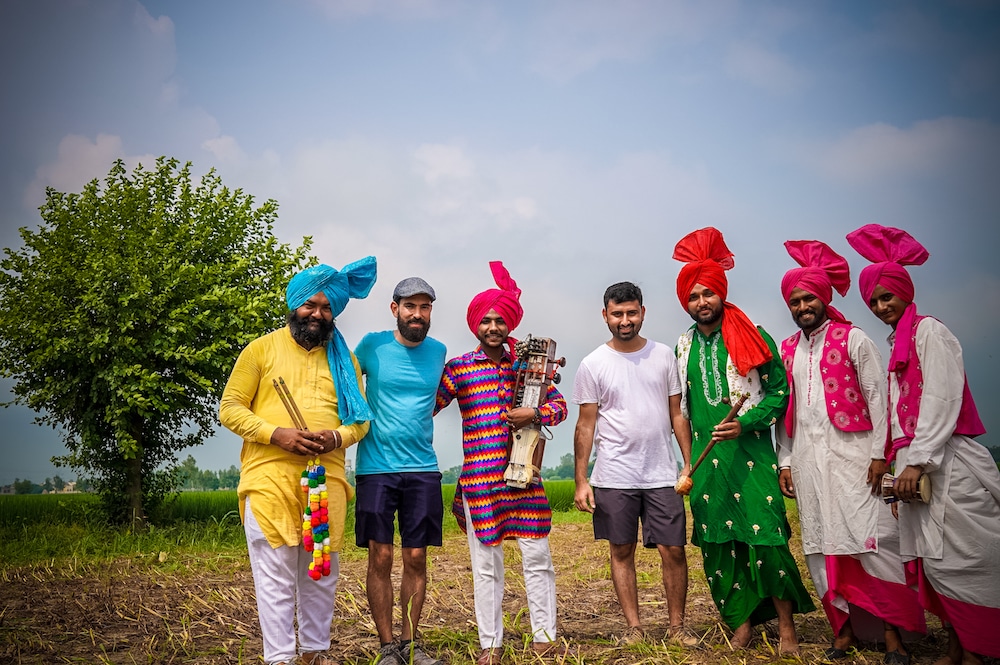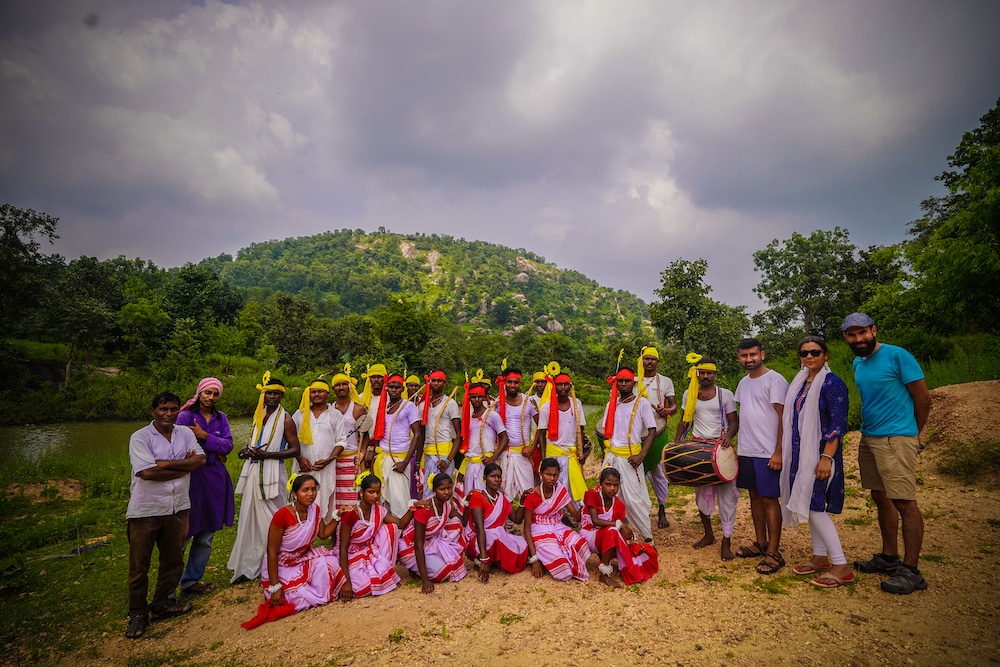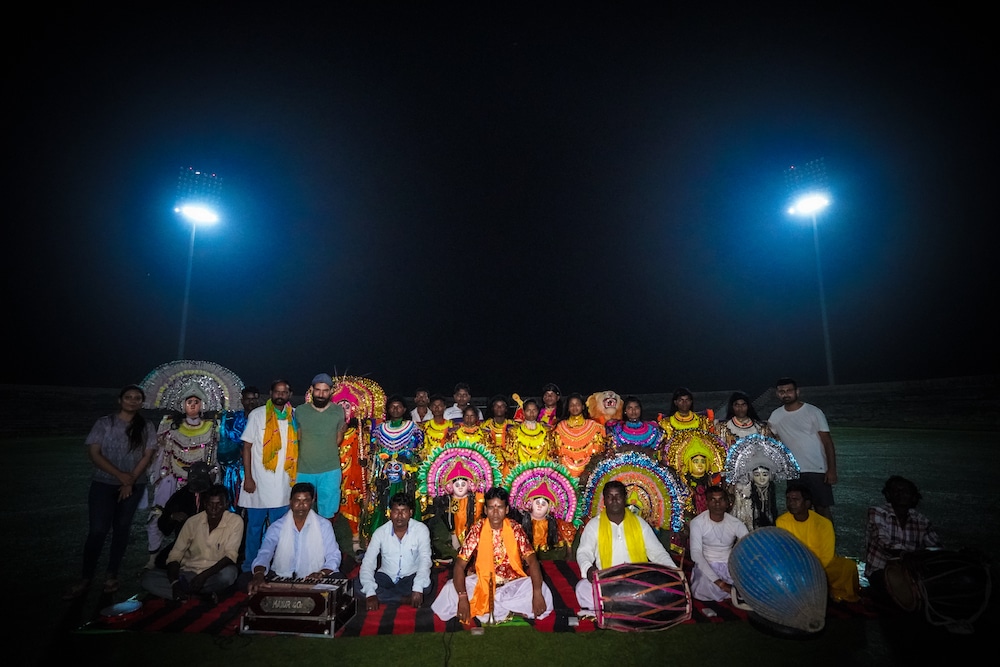
A Secret Folk Tradition
The Kangilo group is led by Prashant and Shekar Bykadi who live in Kalyanpur village, Udupi district. The folk form they perform is a religious devotion in the form of dance. They initially started off as a drama artist and later on got involved with folk art and dance as well. They support all the artists for giving performance throughout India. Shekar with being an artist is also a public speaker and imparts training on human relations, communication skills and leadership building. His family did not belong to this field. But his first encounter with drama started when he was in 8th standard when he performed Yakshagana. He then moved on to drama acting training. He was fortunate enough to be trained by top most directors like Prasanna and Champa. Currently, he is continuing by devoting equal time to drama and dance. With Shekar and Prashant, the group wishes to be active in this field and also like to create peace with domestic activities. Their dream is to support folk dance and drama but does not prefer to work in films or any other activities that do not promote our culture. They are inclined towards folk dance and modern theatre drama.
Shekar is also imparts training to students in many colleges and schools. And, so far many students have been guided by him. Being involved in social work has given him recognition and popularity in his locality. He also conducts humorous programs for birthdays and weddings which has resulted in fame. In the field of drama, he has contacts with people like professors and lecturers. Even to this day, he continues to give performances. The group has performed in various cities and won many awards. In the elocution competition, he got first at the state level in Karnataka. The form of music they perform is only classical which includes Janapada songs. In the drama, there are domestic songs. In Kannada, it is known as Ranga Geethe. In the group, Shekar is the one who also has written such songs and also pens articles. Upon reaching their house in Udupi we were stunned with the dedication they had put in arranging the costumes made out of the fresh palm leaves and the beautiful intrinsic makeup put upon them. With the preparations done they went ahead to the performance which was done at the bank of the backwaters few kilometres away from their house. The performance was highly applauded by the locals who saw it then. Prashant and Shekar are determined to take this rare art form to a wider platform and in this Anahad Foundation is definitely going to help them.








